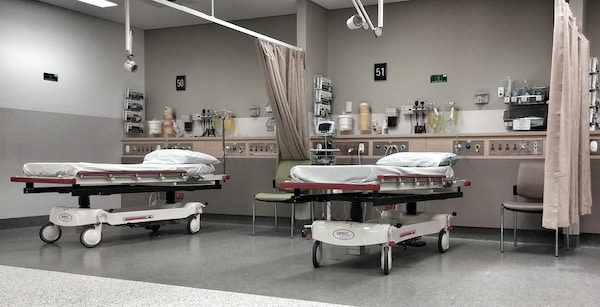Key Points
Question—How do quality of care and patient outcomes change after private equity acquisition of hospitals?
Findings—In a difference-in-differences examination of 662 095 hospitalizations at 51 private equity—acquired hospitals and 4 160 720 hospitalizations at 259 matched control hospitals using 100% Medicare Part A claims data, private equity acquisition was associated with a 25.4% increase in hospital-acquired conditions, which was driven by falls and central line—associated bloodstream infections. Medicare beneficiaries at private equity hospitals were modestly younger, less likely to have dual eligibility for Medicare and Medicaid, and transferred more to other acute care hospitals relative to control, likely reflecting a lower-risk population of admitted beneficiaries. This potentially explained a small relative reduction for in-hospital mortality that dissipated by 30 days after hospital discharge.
Meaning—Private equity acquisition of hospitals, on average, was associated with increased hospital-acquired adverse events despite a likely lower-risk pool of admitted Medicare beneficiaries, suggesting poorer quality of inpatient care.
Abstract
Importance—The effects of private equity acquisitions of U.S. hospitals on the clinical quality of inpatient care and patient outcomes remain largely unknown.
Objective—To examine changes in hospital-acquired adverse events and hospitalization outcomes associated with private equity acquisitions of U.S. hospitals.
Design, Setting, and Participants—Data from 100% Medicare Part A claims for 662 095 hospitalizations at 51 private equity—acquired hospitals were compared with data for 4 160 720 hospitalizations at 259 matched control hospitals (not acquired by private equity) for hospital stays between 2009 and 2019. An event study, difference-in-differences design was used to assess hospitalizations from 3 years before to 3 years after private equity acquisition using a linear model that was adjusted for patient and hospital attributes.
Main Outcomes and Measures—Hospital-acquired adverse events (synonymous with hospital-acquired conditions; the individual conditions were defined by the U.S. Centers for Medicare & Medicaid Services as falls, infections, and other adverse events), patient mix, and hospitalization outcomes (including mortality, discharge disposition, length of stay, and readmissions).
Results—Hospital-acquired adverse events (or conditions) were observed within 10 091 hospitalizations. After private equity acquisition, Medicare beneficiaries admitted to private equity hospitals experienced a 25.4% increase in hospital-acquired conditions compared with those treated at control hospitals (4.6 [95% CI, 2.0-7.2] additional hospital-acquired conditions per 10 000 hospitalizations, P = .004). This increase in hospital-acquired conditions was driven by a 27.3% increase in falls (P = .02) and a 37.7% increase in central line—associated bloodstream infections (P = .04) at private equity hospitals, despite placing 16.2% fewer central lines. Surgical site infections doubled from 10.8 to 21.6 per 10 000 hospitalizations at private equity hospitals despite an 8.1% reduction in surgical volume; meanwhile, such infections decreased at control hospitals, though statistical precision of the between-group comparison was limited by the smaller sample size of surgical hospitalizations. Compared with Medicare beneficiaries treated at control hospitals, those treated at private equity hospitals were modestly younger, less likely to be dually eligible for Medicare and Medicaid, and more often transferred to other acute care hospitals after shorter lengths of stay. In-hospital mortality (n = 162 652 in the population or 3.4% on average) decreased slightly at private equity hospitals compared with the control hospitals; there was no differential change in mortality by 30 days after hospital discharge.
Conclusions and Relevance—Private equity acquisition was associated with increased hospital-acquired adverse events, including falls and central line—associated bloodstream infections, along with a larger but less statistically precise increase in surgical site infections. Shifts in patient mix toward younger and fewer dually eligible beneficiaries admitted and increased transfers to other hospitals may explain the small decrease in in-hospital mortality at private equity hospitals relative to the control hospitals, which was no longer evident 30 days after discharge. These findings heighten concerns about the implications of private equity on health care delivery.

